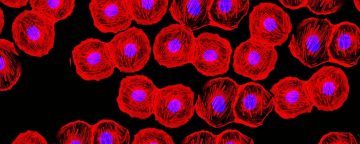Jules Montague in BBC:
 Jay Shetty is 8 years old. He is smart and bright, says his mother Shilpa, even if he can’t do all the things his younger brother can. “Jay doesn’t sit up or use his hands much. He’s non-verbal and we don’t know how well he can see,” she says. “But he plays with us and tries to copy everything his younger brother Kairav does.”
Jay Shetty is 8 years old. He is smart and bright, says his mother Shilpa, even if he can’t do all the things his younger brother can. “Jay doesn’t sit up or use his hands much. He’s non-verbal and we don’t know how well he can see,” she says. “But he plays with us and tries to copy everything his younger brother Kairav does.”
Jay has cerebral palsy. In his early years, Shilpa was desperate to find anything that might help him. Scouring the internet late each night, she read about a stem cell trial at Duke University in North Carolina but Jay wasn’t eligible. When Kairav was born in 2015, Shilpa and her husband stored their younger son’s umbilical cord blood, which was rich in blood stem cells, hoping another trial would emerge. It did, and this time, children with sibling cord blood could participate. Was she worried about the risks for Jay? “It wasn’t invasive and it couldn’t do any harm really.” To raise the £15,000 ($18,200) treatment bill, they supplemented money they had already fundraised for private physiotherapy and hydrotherapy with a personal loan and a further fundraising push supported by the cord bank where Kairav’s cord blood had been stored. Cerebral palsy is a group of lifelong conditions that affect movement and coordination. In Jay’s case, Shilpa explains, there were complications around the time of his birth that led to the condition. There is no cure for cerebral palsy but physiotherapy, speech therapy and occupational therapy can help some symptoms. Shilpa hoped, though, that Jay’s stem cell therapy – a two-hour infusion into his veins – would bring benefits far beyond everything they had tried before.
We all have stem cells – these are building-block cells of sorts, with the ability to develop into a wide range of specialised cell types, such as muscle, skin, or brain cells. Stem cells not only replenish our old cells but also spring into action to repair and replace injured tissue. As a result, they have been likened to our own army of microscopic doctors, but that army is relatively small. The excitement around stem cell therapy revolves around the ability to grow more of these cells in the laboratory so they can be used to produce new tissue, replace damaged cells, and unravel disease mechanisms.
More here.
